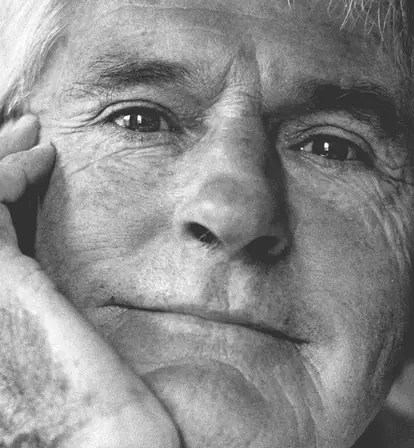An eccentric psychologist and researcher, Timothy Leary became an outspoken advocate of LSD in the 1960s — and introduced millions to psychedelic drugs.
Timothy Leary was one of the most famous yet misunderstood figures of the counterculture era. His fervent admirers saw him as a brilliant philosopher and psychedelic guru. They believed that he was inspiring a revolution in the psychological and spiritual lives of countless Americans.
But his critics — especially the authorities — saw him as a threat to public order. U.S. President Richard Nixon once even declared Leary “the most dangerous man in America.”
Whether he was revered or reviled, Leary was nonetheless a complicated man. He was a lifelong anti-authoritarian and fun-loving explorer with a genuine interest in expanding the possibilities of human consciousness. But he was also known to have been a celebrity-obsessed, egotistical partier and charlatan. Leary was also said to have been an untrustworthy person.
Bill Minutaglio, who co-wrote a biography on Leary titled The Most Dangerous Man in America, said to NPR that “he’s kind of, you know, a Mr. Magoo on acid, if you will. He’s just tripping his way through life, and circumstances happen. He opens one door and then plummets nine stories but somehow or other lands on a trampoline and goes to another floor.”
This is the complicated true story of Timothy Leary, “the high priest of LSD.”
The Early Rebellions Of Timothy Leary
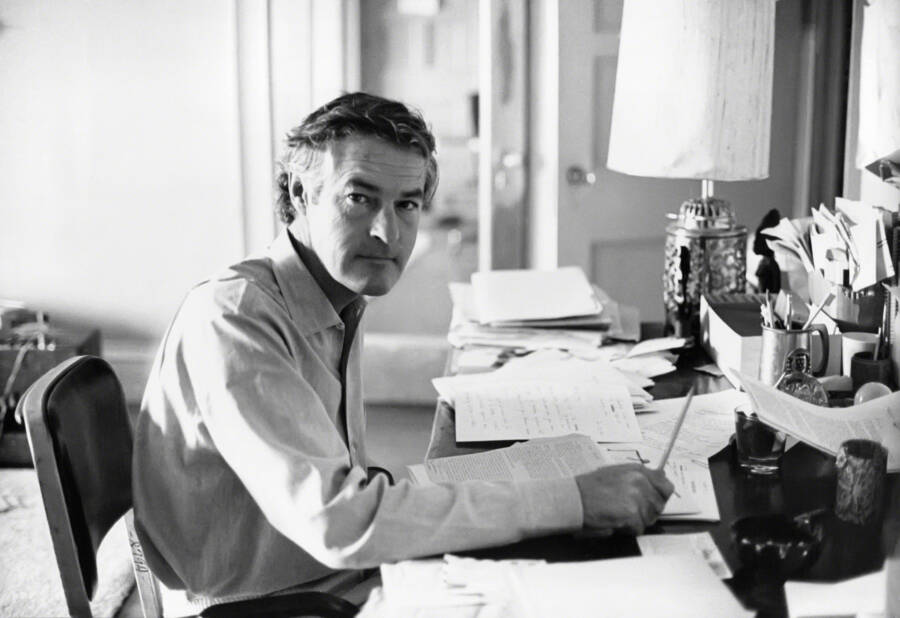
PL Gould/IMAGES/Getty ImagesTimothy Leary photographed at his home. Circa 1966.
Born in 1920 in Springfield, Massachusetts, Leary engaged in especially pronounced mischief as a young man. For starters, he was kicked out of West Point Military Academy as a consequence of a drinking binge.
Later on, in 1941, he was expelled from the University of Alabama for spending a night in a female dormitory. After some time in the military during World War II, Leary eventually returned to academia and earned a Ph.D. in Clinical Psychology from the University of California, Berkeley.
He spent the early part of the 1950s living a relatively standard, middle-class life with his wife and two children while working in California Bay Area universities and directing research for the Kaiser Family Foundation.
His work focused on such topics as personality tests and group therapy. His first book came out in 1957 and detailed personality disorders. Some of Leary’s colleagues later accused him of failing to give them adequate credit.
Even during this period of relative stability, Leary managed to engage in a fair bit of chaos through drinking and sleeping around. In what would become a recurring feature of his life, his family bore the brunt of his actions.
According to The New Yorker, when Leary’s first wife Marianne Busch confronted him about his infidelities, he reportedly told her, “That’s your problem.” She later died by suicide in 1955.
How Timothy Leary Was Introduced To Psychedelics And LSD
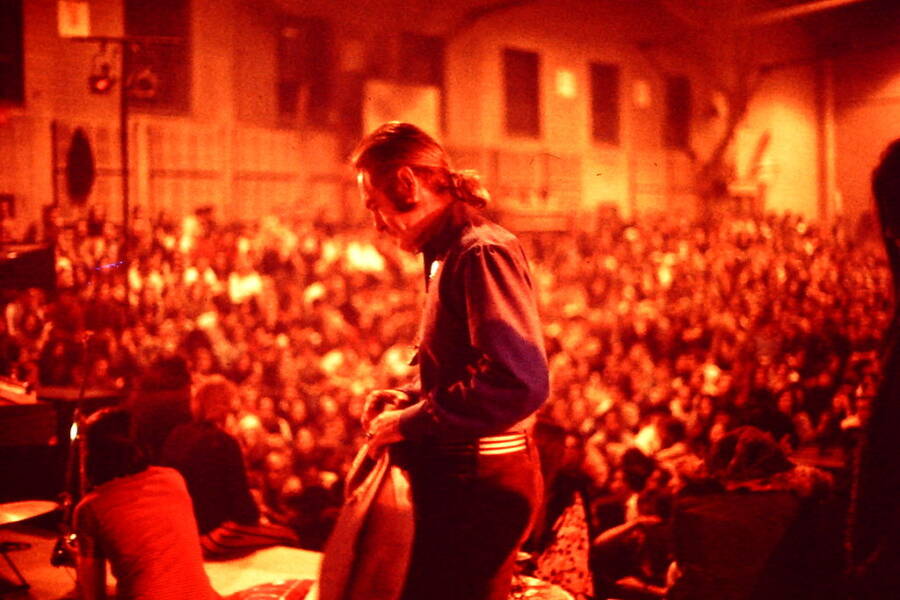
Wikimedia CommonsTimothy Leary speaking to students during a lecture tour in the late 1960s.
In 1958, Timothy Leary briefly moved to Europe with his children. While in Spain, he had a mysterious bout of illness that left him delirious.
He later wrote: “With a sudden snap, all the ropes of my social self were gone. I was a 38-year-old male animal with two cubs. High, completely free.”
Upon returning from Europe, Leary accepted a position as a lecturer at Harvard University. Then, during a trip to Mexico, he tried psychedelic psilocybin mushrooms for the first time, perhaps inspired by the out-of-body experience that he had in Europe. Recalling his delirium there, tripping soon became a seminal experience for the psychologist.
The Leary that returned from Mexico was a different man. He created the Harvard Psilocybin Project with Richard Alpert, an associate in the psychology department who would later be better known as Ram Dass.

John Stephen Dwyer/Wikimedia CommonsThe rose window in Harvard’s Marsh Chapel, the site of some of Leary’s experiments.
Leary and Alpert administered psychedelic drugs — initially psilocybin but later LSD — to colleagues, prison inmates, and divinity students. Leary later wrote that the divinity students’ participation showed that “spiritual ecstasy, religious revelation, and union with God were now directly accessible.”
He also said the subjects had “profound mystical and spiritual experiences, which… permanently altered their lives in a very positive manner.”
But one participant hilariously described the project as “a bunch of guys standing around in a narrow hallway saying, ‘Wow.'”
Unsurprisingly, Leary and Alpert’s work attracted a considerable amount of controversy, particularly when rumors spread that they were pressuring graduate students to participate while also giving drugs to undergraduates. The parents of students, for one, agreed that these alterations were not all positive. They protested the continuation of the project at Harvard.
In 1963, Harvard fired Alpert and declined to renew Leary’s teaching assignment. The reason given was that he’d stopped showing up to his scheduled lectures due to spending so much time on his psychedelics experiments. It was just as well — Leary would soon find the means to continue with his experiments in relative autonomy.
Experiments In Millbrook And Growing Fame
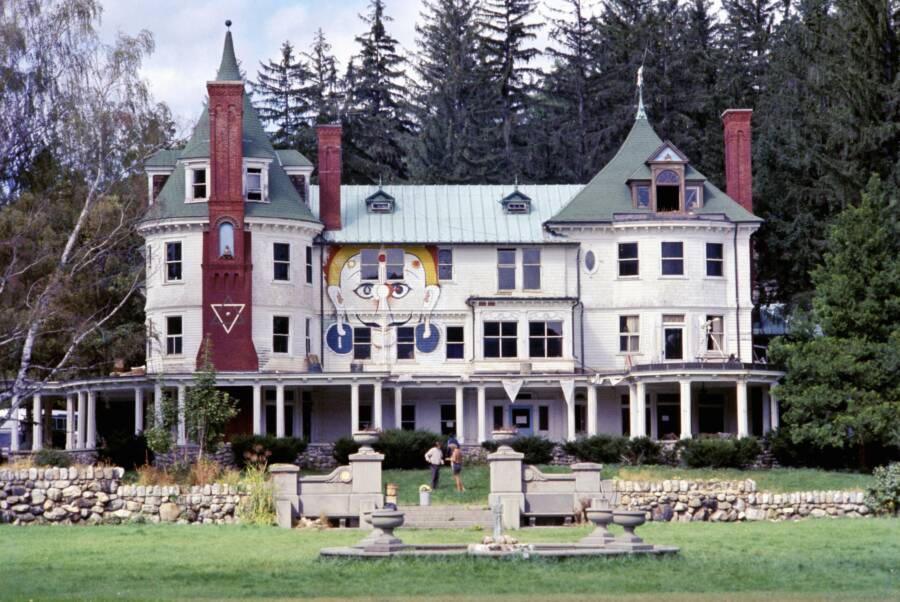
Alvis Upitis/Getty ImagesThe Hitchcock Estate in Millbrook, New York, where Leary conducted many of his experiments.
An unlikely source offered Timothy Leary the space to continue his work: the heirs to the Mellon family fortune. Wealthy siblings Peggy, Tommy, and Billy Hitchcock acquired a 64-room mansion in Millbrook, New York, and allowed Leary and Alpert to use it as the home base for their psychedelic research.
While the environment at the Hitchcock Estate was more freewheeling than that at Harvard, Leary’s methods for experimenting with LSD were still fairly structured and organized, especially when compared to how LSD was used by other prominent countercultural experimenters.
In his book The Electric Kool-Aid Acid Test, author Tom Wolfe described Leary and Alpert’s preferred “set and setting” method for ingesting LSD:
“The ‘set’ was the set of your mind. You should prepare for the experience by meditating upon the state of your being and deciding what you hope to discover or achieve on this voyage into the self. You should also have a guide who has taken LSD himself and is familiar with the various stages of the experience and whom you know and trust.”
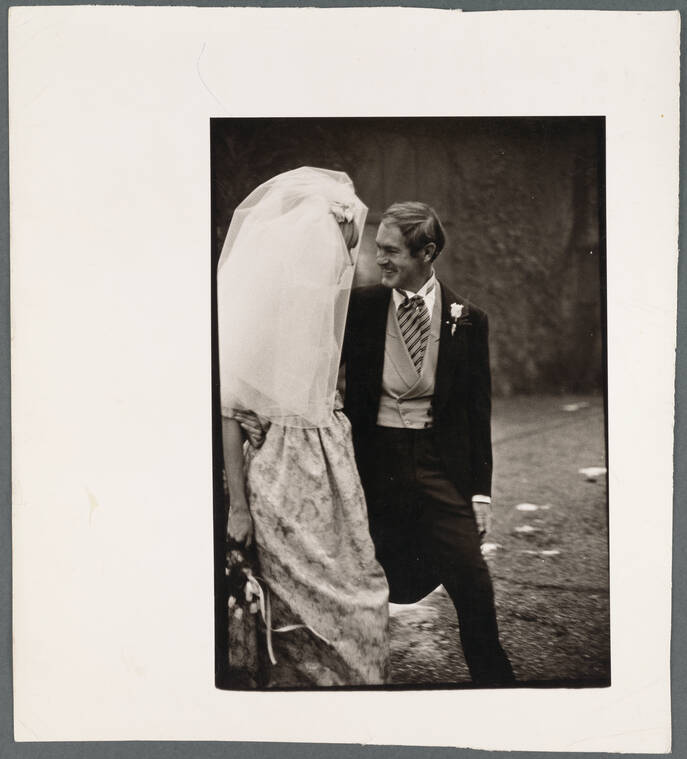
New York Public LibraryTimothy Leary and his second wife, model Birgitte Caroline “Nena” von Schlebrügge, in Millbrook. 1964.
During this time period, Leary befriended the poet Allen Ginsberg, whose fame brought Leary into contact with a wide variety of celebrities and intellectuals. Leary was able to evangelize his beliefs about the benefits of LSD and other psychedelics to figures like jazz musician Charles Mingus, writer William Burroughs, and multimedia magnate Henry Luce.
Leary’s courting of prominent figures was partially a strategic ploy to further his work on psychedelics. But it was also a way for him to pursue fame.
According to The Daily Beast, Leary’s son Jack would later say that his father “never wanted to be a guru. He wanted to be a rock star, a Mick Jagger, but he couldn’t play the guitar.”
In 1964, Leary, Alpert, and Ralph Metzner published the book The Psychedelic Experience: A Manual Based on The Tibetan Book of the Dead.
The book includes the line, “Turn off your mind, relax, and float downstream,” which John Lennon later adopted for the lyrics to “Tomorrow Never Knows.” Clearly, celebrities were just as inspired by Leary as he was inspired by them. But they weren’t the only people that Leary influenced.
“Turn On, Tune In, Drop Out”

New York Public LibraryA brochure for a lecture tour featuring Timothy Leary and Ralph Metzner. 1965.
By the mid-1960s, Timothy Leary had become one of the leading public advocates for the use of LSD and other psychedelic drugs. But unlike author Ken Kesey and his “Acid Test” parties in California, Leary promoted the drug on a foundation of doctoral credentials and regimented experiments.
Thanks to his unique approach to his experiments, Leary was invited to testify before a United States Senate subcommittee investigating whether or not LSD was dangerous and should be outlawed.
When Senator Ted Kennedy asked him if LSD was dangerous, Leary replied that “the motor car is dangerous if used improperly… Human stupidity and ignorance is the only danger human beings face in this world.”
The Senate apparently did not find Leary’s testimony compelling enough, as they moved ahead with their plans to outlaw LSD.
Then, in early 1967 at the “Human Be-In,” a San Francisco hippie rally that protested a California law outlawing the use of LSD, Leary unveiled to a mass audience what would soon become his most famous catchphrase: “Turn on, tune in, drop out.”
Leary developed the aphorism with the assistance of the media theorist Marshall McLuhan, who told Leary, “The key to your work is advertising. You’re promoting a product. The new and improved accelerated brain. You must use the most current tactics for arousing consumer interest.”
While Leary’s growing fame attracted attention from celebrities, it also brought the eyes of law enforcement. In 1965, he was arrested for possession of marijuana in Texas. He was sentenced to 30 years in prison but eventually had his conviction overturned on appeal.
Meanwhile, the Millbrook compound was repeatedly subjected to FBI raids and harassment from the authorities — especially an eager assistant district attorney named G. Gordon Liddy, who would later become infamous as one of the architects of Richard Nixon’s Watergate scandal.
Then, in 1967, Leary created the League for Spiritual Discovery, a religious organization whose spiritual practices centered around the use of LSD. This was, in part, an unsuccessful ploy to allow Leary and his associates to continue using the drug in the face of looming bans.
Around this time, Liddy’s raids had taken enough of a toll that the Millbrook operation closed and Leary relocated to California.
Timothy Leary’s Political Aspirations In California

New York Public LibraryA flyer for a benefit for Timothy Leary featuring the poets Allen Ginsberg and Michael McClure. San Francisco. 1973.
Timothy Leary’s 1967 move to California brought him closer to the center of the counterculture movement of which he’d become a leading figure. At the same time, it also increased his exposure to celebrities and criminality.
Shortly after moving, Leary married his third wife, Rosemary Woodruff, during an acid-soaked ceremony officiated by a character actor from Hollywood.
He also moved his family to Laguna Beach to participate in the activities of the “Hippie Mafia” known as the Brotherhood of Eternal Love, a non-profit religious organization similar to his own League for Spiritual Discovery.
But, in addition to sharing Leary’s goals of promoting spiritual transcendence through the use of psychedelic drugs, the Brotherhood was also one of the largest drug smuggling and distribution organizations in the country.
In December of 1968, Leary was arrested again in Laguna Beach for possession of marijuana. By that point, the arresting officer, Neil Purcell, had been trying to bust the Brotherhood for two years.
Part of the reason Purcell had chosen to arrest Leary was that he recognized him for his psychedelics advocacy. For his part, Leary claimed that Purcell planted the drugs on him, according to the OC Weekly.
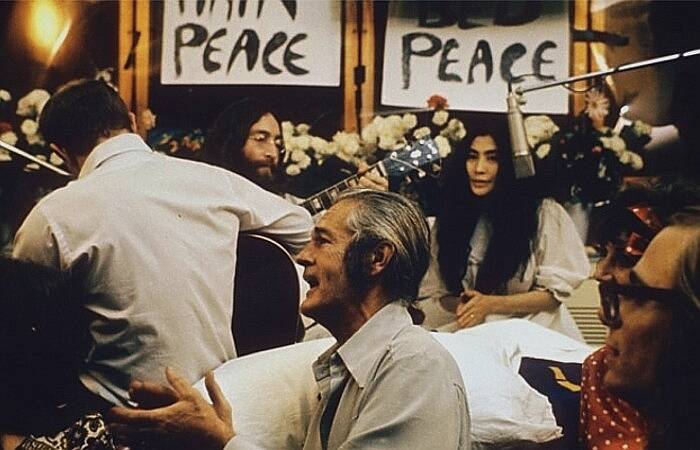
Roy Kerwood/Wikimedia CommonsTimothy Leary with John Lennon and Yoko Ono at their Bed-In for Peace. Montreal. 1969.
Then, in 1969, on the day that Leary won his appeal for his 1965 marijuana arrest and awaited trial for his 1968 marijuana bust, he announced his candidacy for the governorship of California.
While he did so in front of the Laguna Beach art gallery called Mystic Arts World — the Brotherhood of Eternal Love’s headquarters — his political ambitions were not supported by the members of the Brotherhood.
The announcement caught many people by surprise. As it happens, Leary had not been politically active outside of his advocacy for psychedelic drugs, and politicians were not exactly popular with 1960s counterculture.
But thanks to the escalating war in Vietnam, the burgeoning War on Drugs, and the rise of the Black Power movement, the counterculture of the late 1960s was taking on a more political bend than it had at the beginning of the decade. Besides, for politicians hoping to turn attention away from war, ostracizing the counterculturists appeared to be a saving grace.
Through his speaking tours on college campuses and socializing with celebrities, Leary promoted his pro-psychedelics message and personal associations to fit this new, more political environment.
He attended the anti-war Bed-Ins for Peace held by John Lennon and Yoko Ono in Montreal. In return, Lennon wrote “Come Together” as a theme song for Leary’s gubernatorial campaign. But this exciting chapter of Leary’s journey would soon come to an abrupt halt.
More Legal Troubles And A Decline
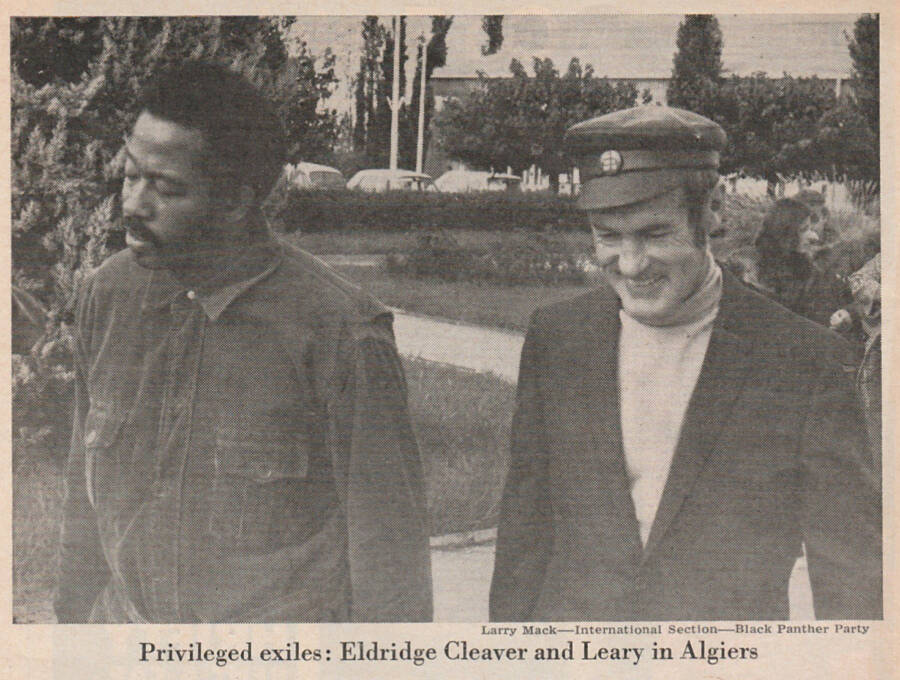
Newsweek November 1970/Larry MackTimothy Leary, pictured in a 1970s printing of Newsweek with Black Panther Eldridge Cleaver.
Timothy Leary’s political campaign ended in early 1970 when he was convicted of marijuana possession and given two consecutive 10-year sentences. For a while, it seemed like the eccentric psychologist would spend a good part of his remaining life behind bars.
But Leary had other plans. With assistance from the Brotherhood, he escaped the California Men’s Colony Prison in San Luis Obispo.
Thanks to his previous work creating personality tests, he was able to game the answers to the psychological tests given to him during his prison intake in order to get assigned to do outdoor work at the prison.
This allowed him to hop the fence, pull himself along a telephone wire, and jump into a car that was waiting for him just outside.
The Brotherhood paid thousands of dollars to the Weathermen — a radical organization that opposed American imperialism — to help facilitate the escape and to smuggle Leary and his wife out of the country.
Eventually, the Learys made their way to the Black Panther Party’s Government-in-Exile in Algeria. However, Leary and his wife’s frequent partying conflicted with the austerity and sobriety of the Panthers, causing Panther leader Eldridge Cleaver to put them under house arrest.
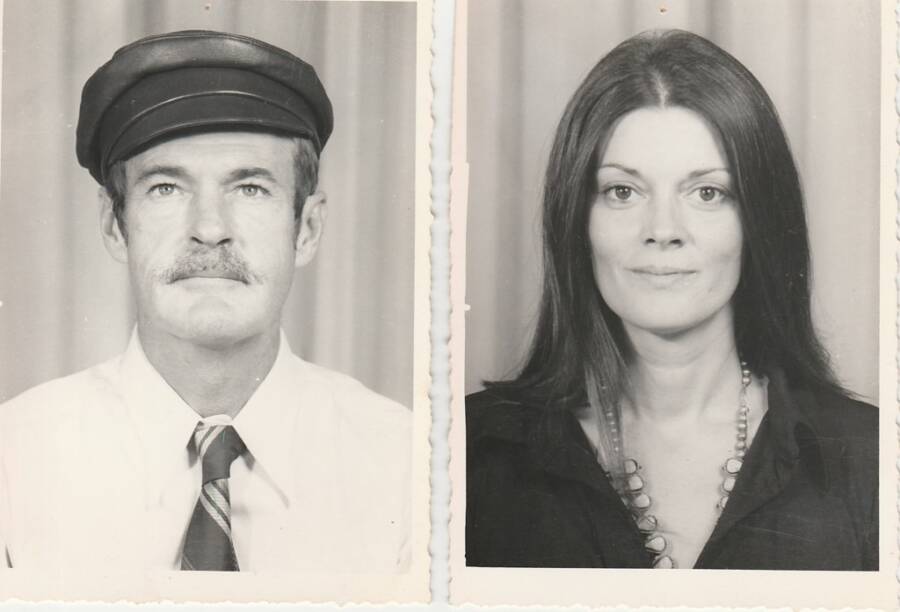
www.timothylearyarchives.orgTimothy Leary and his third wife, Rosemary Leary, photographed for their Algerian passports in 1970.
Next, Leary and his wife escaped to Switzerland, where they came to live with Michel Hauchard, an arms dealer who said that he sheltered Leary because he had an “obligation to protect philosophers.”
However, Hauchard forced Leary to sign over 30 percent of the proceeds of any future books he wrote. He then got Leary arrested, under the assumption that he would be a more productive writer in prison.
The Learys escaped again, then separated. Rosemary Leary spent most of the next two decades as a fugitive back in the United States while Leary was finally arrested by the American Bureau of Narcotics and Dangerous Drugs in Kabul, Afghanistan in 1972. He was then sent to Folsom Prison.
Allegedly, the prisoner in the next cell was none other than infamous cult leader Charles Manson, who allegedly told Leary, “They took you off the streets so that I could continue with your work.”
While in prison, Leary gave information to the FBI about the Weathermen underground organization that had helped him to escape. Leary later claimed he intentionally gave them useless details that were already known.
Nonetheless, many of Leary’s associates in the counterculture sphere were appalled by the news. Allen Ginsberg, Ram Dass, and even Leary’s own son Jack called a press conference to publicly denounce him.
Inside Timothy Leary’s Later Years And Death
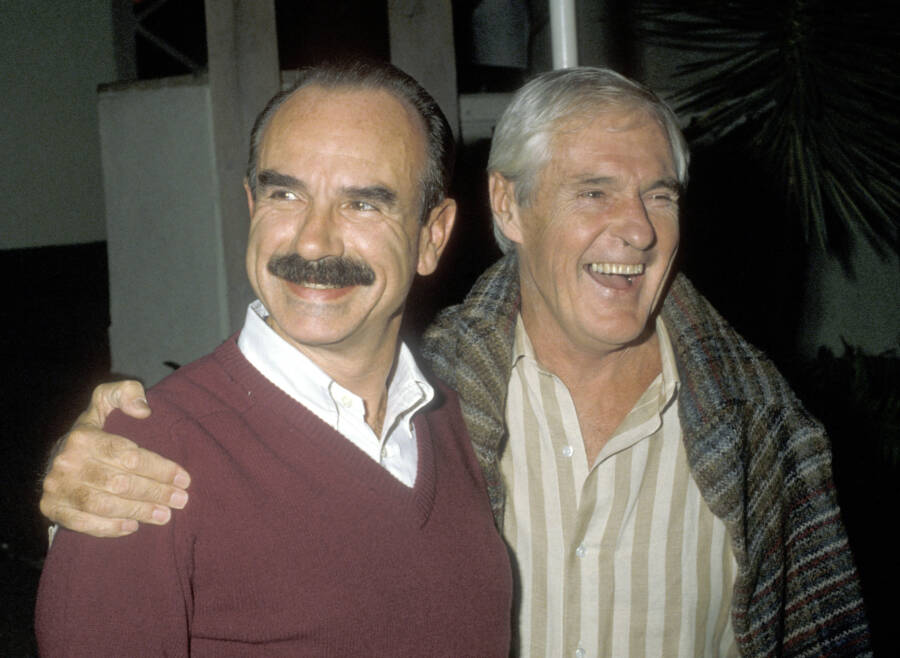
Ron Galella/Contributor/Getty ImagesIn the 1980s, Timothy Leary formed an unexpected partnership with his former nemesis G. Gordon Liddy (left), appearing on a college lecture tour with him called Nice Scary Guy vs. Scary Nice Guy.
Luckily for Leary, Governor Jerry Brown released him from prison in 1976. He was initially placed in the witness protection program, but he moved back to California to resume his life as a third-tier celebrity.
Leary gave numerous lectures as a “stand-up philosopher,” including a surprisingly successful joint tour with his former adversary and fellow ex-con, G. Gordon Liddy. He also wrote occasional pieces of cultural criticism for conservative magazines such as the National Review.
By this point, Leary was no longer attempting to publicly promote psychedelics. He did, however, develop a keen interest in computers as the next great frontier in human consciousness, working on the development of something called the eight-circuit model of consciousness.
As part of this interest in the 1990s, Leary created a website that functioned as a sort of proto-blog cataloging his daily drug intake.
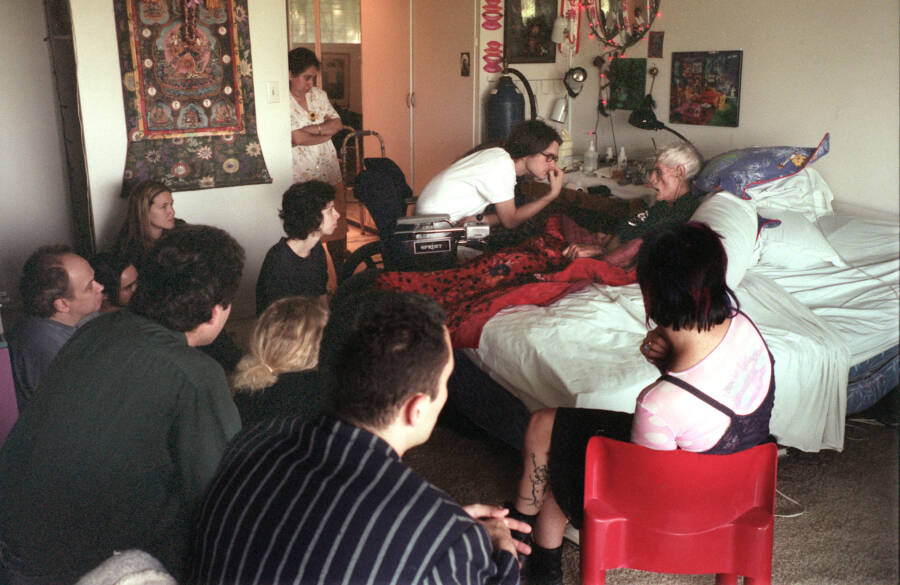
Robert Gauthier/Los Angeles Times via Getty ImagesFriends and family hold a vigil for Leary as he approaches death in his Beverly Hills home on May 30, 1996.
Not content with just computers, Leary also developed a transhumanist philosophy, which called for space colonization, life extension, and increasing the human intellect. He summarized these ideas as SMI2LE — Space Migration, Increased Intelligence, and Life Extension.
Then, in 1994, Leary wrote in his book Chaos and Cyber Culture, that “the time has come to talk cheerfully and joke sassily about personal responsibility for managing the dying process.”
A year later, he was diagnosed with inoperable prostate cancer. Timothy Leary died at age 75 on May 31, 1996, surrounded by his friends and family members. His demise was broadcast live on his website, where his final words were: “Why not? Why not? Why not?”
After his death, some of his cremated remains were sent into orbit in a rocket. And years later, Hollywood actress Susan Sarandon scattered some of his ashes at the Burning Man festival in 2015.
The Enduring Legacy Of Timothy Leary
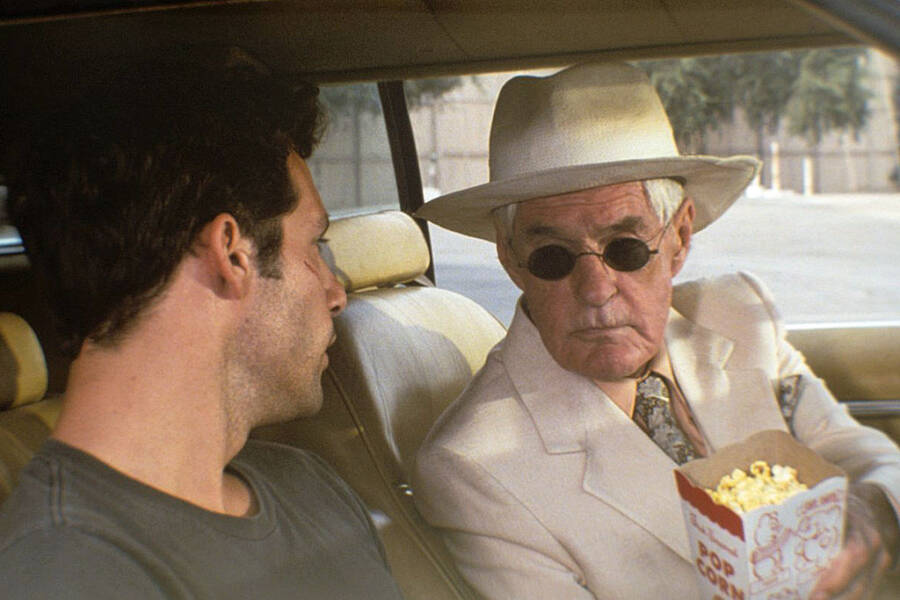
Wikimedia CommonsTimothy Leary appeared in a movie role as Mr. Jones in 1992’s Hold Me, Thrill Me, Kiss Me.
Timothy Leary’s work with psychedelic drugs — especially LSD — was important to the 1960s countercultural movement that rebelled against the restrictive conservatives of mid-20th century America.
But his status as a spiritual leader was not well-suited to him. As Leary’s life showed, he did not want to be a guru. He was an iconoclast whose genuine interest in expanding the possibilities of human consciousness was tempered by his hedonism, ego, and desire for celebrity.
His status as a danger to the public was similarly overblown. While we can debate the merits of psychedelic drug use, it’s comical to imagine Leary being the “most dangerous man in America” compared to such figures as his onetime jailmate, the cult leader Charles Manson, or the man who burdened him with that “dangerous” label, the disgraced President Richard Nixon.
In many ways, it seemed that the most immediate danger Leary ever posed was to his own family members. One of his wives died by suicide while another spent decades in exile, largely due to his actions.
Meanwhile, his son led a troubled life and his daughter shot her boyfriend and later killed herself after she was arrested. Evidently, Leary left a sordid legacy in his own home.
Timothy Leary was a complex, flawed man who led a fascinating life that’s difficult to summarize in simple black-and-white terms. In this sense, he’s an effective symbol of the free-thinking counterculture he represented.
After reading about Timothy Leary, learn about his Harvard colleague and fellow LSD enthusiast, Richard Alpert. Then, check out this gallery of the Merry Pranksters and their mission to spread LSD across America.
